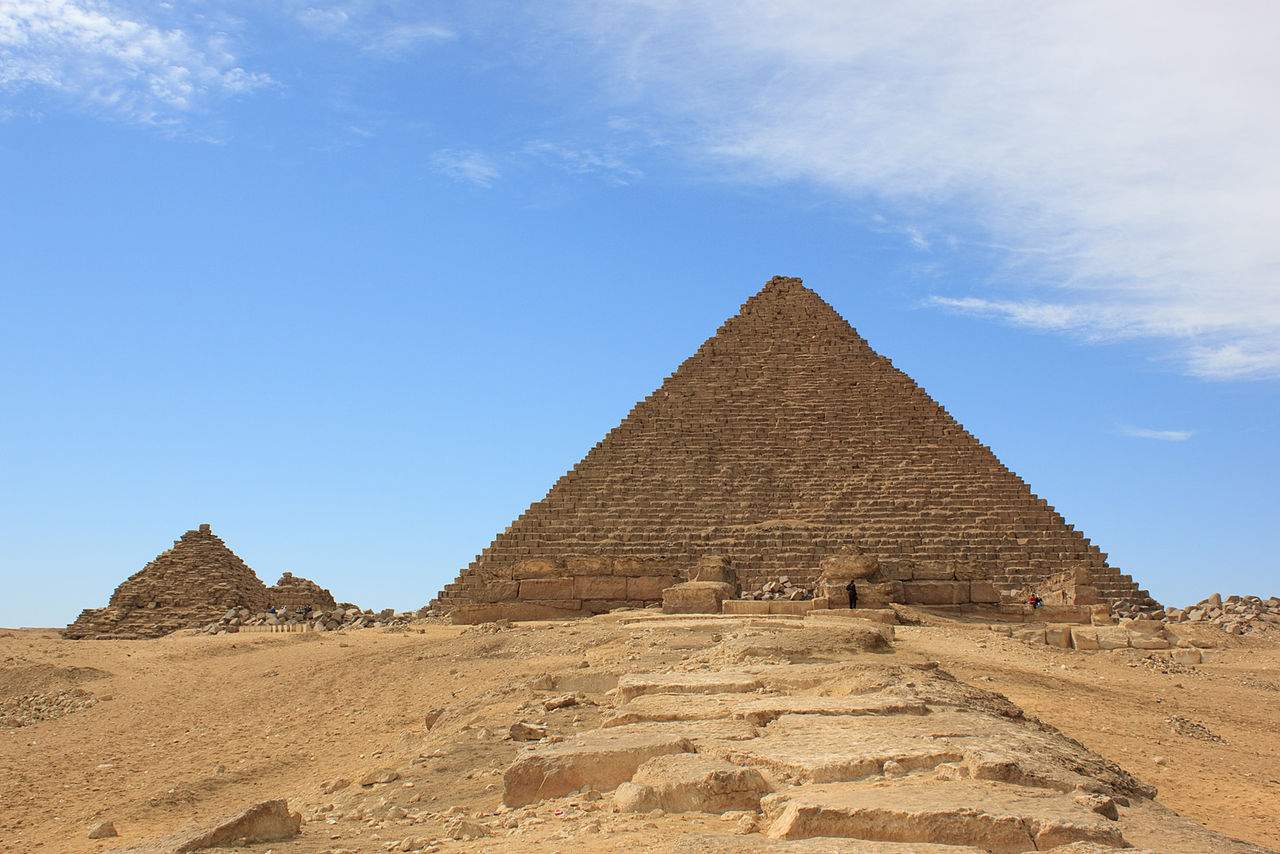In Giza they want to reconstruct the facade of the pyramid of Mycerinus: strong criticism from archaeologists
The recent proposal to rebuild the façade of one of the pyramids in Egypt ’s Giza Plain has sparked strong opposition from the country’s archaeologists. The announcement has sparked criticism from social media users, who in various ways have called the project “a sad disaster”-this, in particular, was the scathing judgment that was given by Ibrahem Badr, a professor of restoration at MUST University in Tunis. Mostafa Waziri, secretary-general of Egypt’s Supreme Council of Antiquities, disclosed through a video the plan to rebuild the facade of the Pyramid of Mycerinus, the smallest of the three pyramids. The three-pyramid complex, erected about 4,000 years ago, includes three mausoleums: the most imposing one dedicated to Cheops, 147 meters high, the pyramid of Chephren, 136 meters high, and finally the pyramid of Mycerinus, 61 meters high.
Waziri’s goal, then, is to restore the facade of the monument, which once contained 16 layers of granite, using the granite blocks found at the base. The project is expected to be completed in about three years. Waziri said the project originated as a collaboration with the Japanese government and Japanese Egyptologist Sakuji Yoshimura, whose attempt to erect a pyramid in 1979 was unsuccessful. Therefore, the first phase of the project involves the study of the stone blocks, followed by laser scanning and the resurfacing of the exterior. Nour Badr, the head of the scientific team that documented the stones with a 3-D laser, said the team used Japanese technology to create a digital model of the pyramid and the pyramid’s alleged fallen stone blocks. “We are using and reassembling the actual blocks that fell to the ground from the pyramid itself,” Badr said. “They say we are putting in new things. We are using international restoration materials that have standardized specifications approved by international committees for restoration and assembly work.” Mohamed Al-Saidi, a member of the team, mentioned instead the possible scientific breakthroughs that could result from the project and dismissed criticism regarding the lack of consideration of the scientific method or academic value by the authorities involved in its implementation.
Just as social users have criticized the project, Egyptologist Monica Hanna, too, shared a statement on Facebook criticizing Waziri’s idea. In her post, she disputes the idea that the granite blocks at the base of the pyramid were fallen fragments. “The disagreement, rather than methodology or application, is more about the basic principles and axioms of archaeological work,” Hanna said. Observing the unpolished manufacture of the fragments on the ground, the Egyptologist argues that they were probably deliberately left behind by the pyramid workers, ruling out falling pieces. Some of the blocks missing from the pyramid also were once used by King Ramses II to make statues and reliefs. Over the centuries, the pyramid’s other granite blocks were used to construct buildings, arsenals and infrastructure. He also suggested that Waziri should have published a full study of the project in an international peer-reviewed archaeological journal before starting construction work on the pyramids, rather than making an ad with men digging in the background. “All international principles on renovations prohibit such interventions,” and he called on his colleagues to mobilize immediately to oppose the project. “All we needed was to tile the Pyramid of Mycerinus. When will we put an end to this absurd management of Egypt’s heritage?”
Hanna also highlighted the potential risk that the work could jeopardize the inclusion of the Memphis necropolis, which includes the pyramid plateau, on the World Heritage list. “The project,” he said, “is tantamount to tampering with Egyptian antiquities and undermining their antiquity and history.”
Image: the Pyramid of Mycerinus. Photo: Ben Snooks
 |
| In Giza they want to reconstruct the facade of the pyramid of Mycerinus: strong criticism from archaeologists |
Warning: the translation into English of the original Italian article was created using automatic tools. We undertake to review all articles, but we do not guarantee the total absence of inaccuracies in the translation due to the program. You can find the original by clicking on the ITA button. If you find any mistake,please contact us.





























